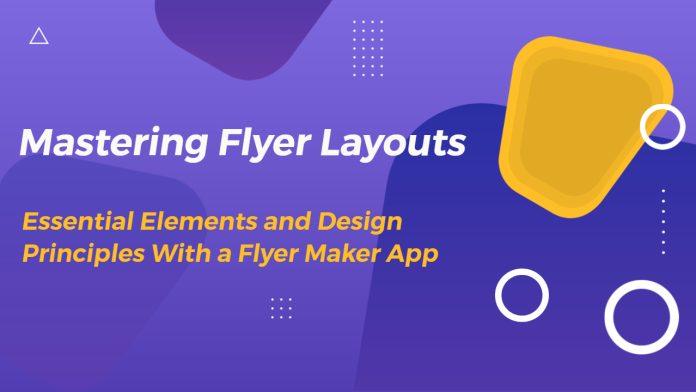Welcome to our blog, where we delve into the art of mastering flyer layouts and explore the essential elements and design principles that make them visually appealing and effective. In this article, we will guide you through the process of creating captivating flyers using a flyer maker app. Whether you’re designing for business promotions, school events, or personal projects, understanding the key elements of flyer layout and applying design principles will help you create eye-catching and impactful designs. Let’s get started!
Importance of Flyer Layouts
The importance of flyer layouts cannot be overstated when it comes to effective communication. A well-designed layout plays a crucial role in capturing attention, conveying information, and maximizing the impact and engagement of your flyer. Here are some key reasons why flyer layouts are essential:
- Grabbing Attention: A carefully crafted layout immediately catches the reader’s eye. It creates visual appeal and draws the viewer in, making them curious to explore further. An eye-catching headline, strategically placed images, and a well-organized design can make your flyer stand out from the crowd.
- Conveying Information: Flyer layouts provide a structured way to present your message and key details. By organizing the content in a logical manner, you ensure that important information is easily accessible and understood. Clear headings, subheadings, and bullet points help readers navigate the flyer and quickly grasp the main points.
- Maximizing Impact: The layout of your flyer greatly influences its impact on the viewer. By carefully arranging elements such as text, images, and whitespace, you can create a visually pleasing composition that enhances the overall message. A well-designed layout helps to convey professionalism, credibility, and a sense of purpose, making your flyer more memorable and persuasive.
- Enhancing Readability: A good flyer layout improves readability by making the text and information easily legible. Proper font selection, font size, and spacing between lines and paragraphs ensure that readers can quickly scan and comprehend the content. Choosing fonts that are clear and legible, especially for primary school students, is crucial to ensure the flyer’s accessibility.
- Guiding the Viewer’s Eye: A well-planned layout guides the viewer’s eye through the flyer, directing their attention to the most important elements and information. Strategic placement of visuals, use of arrows or lines, and proper alignment help create a visual flow that leads the reader from one section to another, ensuring they don’t miss key details.
- Reinforcing Brand Identity: A consistent and well-executed layout reinforces your brand identity. By incorporating your logo, color scheme, and other branding elements, you create a cohesive visual representation of your business or event. This helps establish brand recognition and builds trust among your target audience.
Essential Elements of Flyer Layout
- Headline and Subheadings: Grabbing attention with powerful text the headline and subheadings are key elements that immediately grab the reader’s attention. Use concise and compelling text to highlight the main message and key details of your flyer.
- Imagery and Graphics: Visual appeal and enhancing message incorporate relevant and high-quality images or graphics that align with your message. Visual elements should complement the text and capture the essence of your flyer.
- Body Text: Communicating key details effectively the body text provides the necessary details about your event or promotion. Organize the information in a clear and concise manner, making it easily readable for primary school students.
- Call-to-Action (CTA): Encouraging response and engagement a strong call-to-action prompts the reader to take action. Use clear and compelling language to encourage your audience to participate, such as visiting a website, making a phone call, or attending an event.
- Branding: Consistency and establishing identity maintain consistency in your flyer design by incorporating branding elements such as your logo, color scheme, and fonts. This helps establish a strong brand identity and ensures recognition across various marketing materials.
Design Principles for Effective Flyer Layouts
- Balance: Creating visual harmony achieves visual balance by distributing elements evenly throughout the layout. Balance can be achieved through symmetrical or asymmetrical arrangements, ensuring that no one element overpowers the others.
- Contrast: Making key elements stand out to create contrast by using contrasting colors, font sizes, or font styles. This helps highlight important elements and creates visual interest in your flyer design.
- Alignment: Organizing elements for visual cohesion maintain a clean and organized layout by aligning elements along a grid. This creates visual cohesion and improves readability. Use guides and rulers in your flyer maker app to assist with alignment.
Conclusion:
Mastering flyer layouts is a crucial skill for creating effective marketing materials. By understanding the essential elements of flyer layout and applying design principles, you can create visually appealing and impactful flyers. Use a flyer maker app to simplify the design process and experiment with different layouts, elements, and principles. Whether you’re promoting a business, event, or school project, a well-designed flyer will capture attention and engage your target audience.
Also, check out our blog on the dos and don’ts of creating a coming soon flyer.



